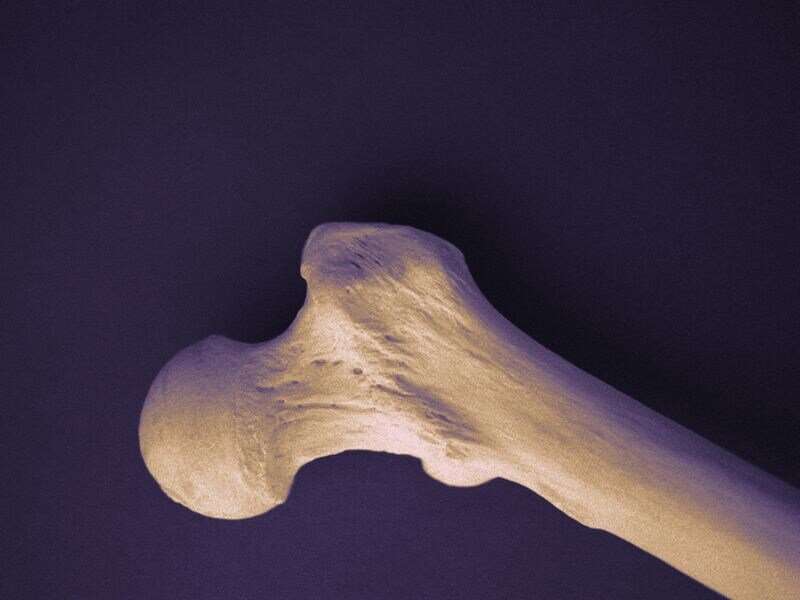(HealthDay)—Obese and overweight older individuals who lose weight have lower bone mineral density (BMD) in their hips, according to a study published in the November issue of Obesity.
Daniel E. Kammire, of the Wake Forest University in Winston-Salem, North Carolina, and colleagues gathered data from 77 adults (mean age, 67 years) at baseline, 18 months, and 30 months as they participated in an 18-month weight-loss program for a separate study. Specifically, the researchers collected data on the patients' body mass and body composition, as well as their BMD, trabecular bone score, and regional bone scores at the hip, femoral neck, and lumbar spine. Patients were classified into two groups: weight regainers (WRs) and weight maintainers (WMs).
The researchers found that of the measurements taken, only total hip BMD was significantly reduced during the 18-month weight-loss intervention in both WRs (3.9 percent loss; 47 percent of patients) and WMs (2.4 percent loss; 53 percent of patients). With adjustment for weight change from zero to 18 months and baseline characteristics, WRs were found to have slightly lower losses in hip BMD compared with patients who maintained their weight (2.6 percent compared with 3.9 percent for WMs) at 30 months, but the difference was not statistically significant. Researchers also found that change in hip BMD had a direct association with change in total fat mass and total lean body mass; however, there was a nonsignificant inverse relationship between total body lean mass and trabecular bone score.
"These data add to a growing body of literature suggesting that bone loss persists after weight loss ends," the authors write. "Thus, to preserve the integrity of the skeletal system, geriatricians and their patients should strive to minimize bone loss during active weight loss attempts and approach weight loss as a permanent lifestyle change."
More information: Abstract/Full Text (subscription or payment may be required)
Journal information: Obesity
Copyright © 2019 HealthDay. All rights reserved.























